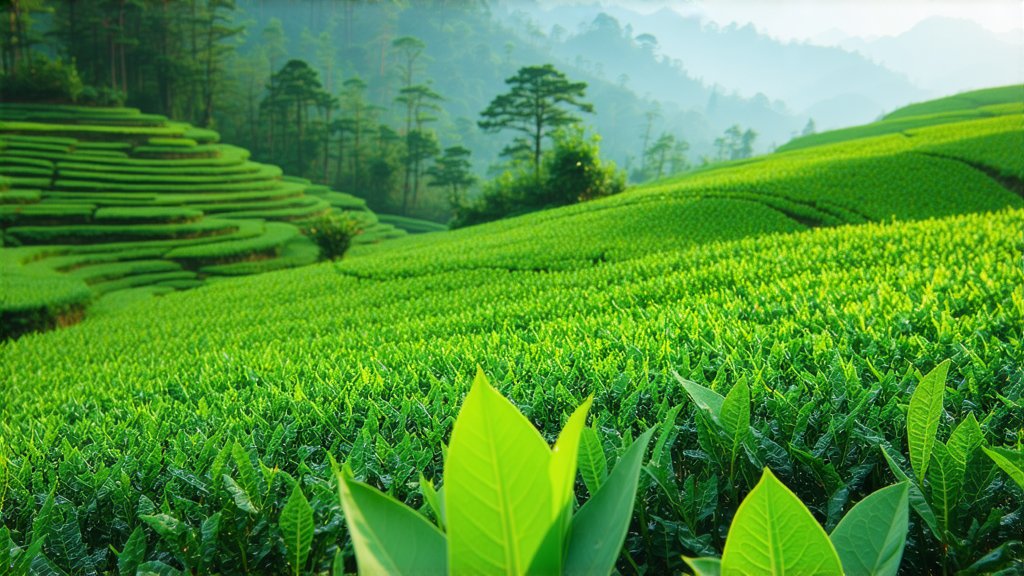
Longjing tea, also known as Dragon Well tea, stands as one of the most revered and celebrated varieties within the vast spectrum of Chinese green teas. Its name, translating to "Dragon Well," evokes images of mystique and quality, hinting at the unparalleled craftsmanship and heritage that this tea embodies. As we delve into the enchanting world of Longjing tea, we uncover its rich history, diverse varieties, intricate production process, and the art of its appreciation.
A Legacy Carved in Time: The History of Longjing Tea
The roots of Longjing tea trace back over a thousand years, with its origins intertwined with the annals of Chinese history. According to legend, during the Tang Dynasty (618-907 AD), a heavenly dragon descended upon the West Lake region near Hangzhou, leaving behind a wellspring that gushed forth crystal-clear waters. It is said that the first Longjing tea plants grew spontaneously around this magical spring, hence the name "Dragon Well."
By the time of the Qing Dynasty (1644-1912), Longjing had already gained significant recognition for its exceptional quality. Emperor Kangxi, impressed by its unique flavor and aroma, bestowed upon it the imperial title "Imperial Tea," elevating its status among the finest teas in China. Today, Longjing continues to be a symbol of Chinese tea culture, cherished both domestically and internationally.
Varietals and Diversity: Exploring the Different Facets of Longjing
Longjing tea encompasses several distinct varieties, each with its own characteristics and charm. The two most prominent ones are:
-
Xihu Longjing (West Lake Dragon Well): Grown exclusively around the picturesque West Lake in Hangzhou, this variety is considered the epitome of Longjing tea. The unique microclimate and fertile soil contribute to the tea's distinctive flat shape, vibrant green color, and nutty aroma. Xihu Longjing is often regarded as the gold standard against which other Longjing teas are measured.
-
Non-Xihu Longjing: Produced in neighboring regions such as Yuhang and Lin'an, these teas share similar qualities with Xihu Longjing but may exhibit slight variations in flavor profile and appearance due to differences in terroir and cultivation practices.
Regardless of the specific variety, all Longjing teas adhere to strict standards of meticulous craftsmanship, ensuring a consistent level of excellence across the board.
Crafting Perfection: The Art of Longjing Tea Production
The journey from leaf to cup for Longjing tea is a testament to the skill and dedication of Chinese tea artisans. The traditional production process involves several meticulous steps:
-
Plucking: Only the youngest, tenderest leaves and buds are handpicked during the early spring harvest, typically between late March and early April. This period ensures optimal freshness and flavor concentration.
-
Fixation: Freshly plucked leaves undergo a brief heating process in large woks or pans to halt oxidation, preserve their vibrant green color. This step also helps to release the natural fragrance of the tea.
-
Shaping: Skilled tea masters use their hands or specialized tools to flatten and shape the leaves into the characteristic flat, sword-like appearance synonymous with Longjing tea. This process requires immense dexterity and practice to achieve the desired form without damaging the leaves.
-
Drying: The shaped leaves are then carefully dried under controlled conditions to remove excess moisture while retaining their crisp texture and aromatic compounds. This final step completes the transformation of raw leaves into exquisite Longjing tea.
Each stage of the production process demands precision and expertise, reflecting the deep respect for tradition and commitment to quality that defines Longjing tea making.
Savoring the Essence: Appreciating Longjing Tea
To truly appreciate the nuances of Longjing tea, one must engage in the ritualistic practice of tea tasting, or "Gongfu Cha" in Chinese. Here's a guide to experiencing the full spectrum of flavors and aromas:
-
Preparation: Begin by selecting a high-quality Longjing tea and a clean, transparent glass or porcelain cup. Rinse the vessel with hot water to warm it up.
-
Infusion: Use water heated to approximately 80-85°C (175-185°F). Place about 3 grams of loose tea or 1-2 teaspoons of tea leaves into the cup. Gently pour the hot water over the leaves, allowing them to unfurl gracefully.
-
Observation: Watch as the leaves dance and release their color, taking note of their vibrant green hue. Inhale deeply to capture the initial burst of fragrant steam rising from the cup.
-
Sipping: Take your first sip slowly, letting the tea coat your palate. Notice the initial sweetness followed by a subtle bitterness that quickly mellows into a refreshing aftertaste. Pay attention to the silky texture and how it feels as it glides down your throat.
-
Multiple Infusions: Longjing tea can be steeped multiple times, with each subsequent infusion revealing new layers of complexity. Adjust the steeping time slightly longer for each brew, typically starting from 1 minute for the first infusion and gradually increasing.
Through mindful sipping and contemplation, one can fully immerse in the sensory journey offered by Longjing tea, appreciating not just its taste but also the cultural heritage and artistry embedded within each cup.
In conclusion, Longjing tea represents more than just a beverage; it is a living testament to centuries of Chinese tea culture and innovation. From its storied past to its meticulous production and elegant consumption, it encapsulates the essence of harmony between nature, humanity, and art. As you embark on your own exploration of this extraordinary green tea, may you find solace, tranquility, and a deeper connection to the timeless traditions that have shaped its legacy.